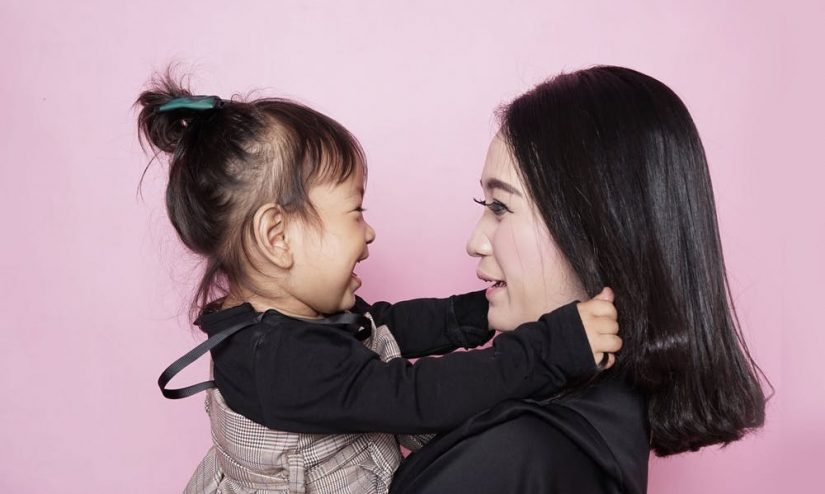You may have a long list of expectations for your child! A few may include:
- Following instructions
- Sharing with others and taking turns
- Being Polite
Parenting (or therapy for that matter!) is not programming a little person to always be perfect. Instead, adults can teach children how to understand and enjoy expected social frameworks.
1. Following instructions:
If you have a child who already follows most basic instructions without control battles, wonderful! You probably have a child who feels confident in their abilities, understands routine, and is motivated to please others. But what if you don’t have a child who can follow instructions?
Let’s think about how children learn to follow instructions.
The first instruction a child usually follows is to ‘throw in the trash’. Why is this one of the first?
- Because the child watches the parents throw things away ALL OF THE TIME!
- Because the expectation is clear and quick; move an item from ‘here’ to ‘there’.
- Because it is imbedded into a routine (meal time, diaper changing).
- Because your child can quickly feel success! A confident, well-regulated, and well- informed child is typically EXCITED to help you.
So how can you help your child follow instructions?
- Model doing what you eventually want your child to do, A LOT
- Make sure your child is in a position to observe. This may include carrying your child, holding their hand, or keeping them seated near you.
- Set the environment for a clear and quick instruction.
- If you ask your child to ‘clean up’, pick something simple and quick! Go for one misplaced toy instead of an entire game with multiple pieces.
- Imbed into a routine.
- Songs and rituals are your friend! Create a routine around important goals before asking your child to help.
- Success over compliance
- Motivate your child with a ‘you can do it’ attitude instead of ‘you must do it because I said so’. The more successful your child feels following an instruction today, the more they will want to continue helping tomorrow.
2. Sharing with others and taking turns
If you have a child who shares and takes turns with others happily and independently, wonderful! You probably have a social child who has many positive memories sharing and playing with others. But what if you don’t have a child who can share or take turns with others?
The FIRST sharing or turn taking typically happens without toys. Children learn to take turns with social games, such as ‘peek a boo’ or ‘chasing’. A child will let go of his favorite dinosaur if he knows that his mom is going to use it to chase him around the room. A child will let go of her favorite blanket if she knows that her dad will use it for an enjoyable peek a boo game.
So how can you help your child share and take turns?
- Introduce an enjoyable framework with a ‘back and forth’ model.
- Examples: Hot potato, chase, hide and seek, passing/throwing/kicking
- Make sure that the child never completely ‘loses’ access to the item as it will come back to them
- Create TRUST and JOY around sharing and turn taking
- If you ‘borrow’ an item, give it back without demands!
- Make turn taking FUN and INTERACTIVE
- Try not to chastise your child for not wanting to share; they are still learning to develop trust and joy in partner activities that still seem uncertain to them
- Success over compliance!
- Again, motivate your child with a ‘you can do it’ attitude instead of ‘you must do it because I said so’. The more trust and joy your child feels when interacting in a turn taking or sharing routine, the more they will want to share again!
3. Being Polite
The title of this blog is ‘mindfulness over perfection’, which fits in perfectly when teaching your child to ‘be polite’. Let’s focus on the REASON we are polite and not worry about enforcing the ‘rule’ of saying “please” and “thank you”.
- Model, Model, Model
Show how saying ‘please’ to your spouse elicits a more positive response than a simple request. Model how you say your polite words with a change in your voice, facial expression, and body language. Model taking pride and joy in how polite and well-spoken you are.
- WHY
Highlight WHY you are saying ‘please’ (Please! I know you are busy, but it would REALLY help me) and ‘thank you’ (Thank you! This meant so much to me!).
- Encourage and team up!
Encourage your child to ‘be polite and well-spoken’ like you are. Then, for extra emphasis, be a partner to your child and ‘team’ with them to make polite requests. You can say, “Dad has been busy recently, but I think tonight we can convince him to play with us. Let’s go up to him together and say, ‘PLEASE play with us!’. We have to make sure to say ‘please’ so we can show him how much we care and I know he will appreciate us saying it so nicely.”
- Gently remind your child
Child: “I want a cookie”.
Parent: “Oh you want a cookie? Let me think if I should give you one. I do love it when you say, ‘please’”
Child: “PLEASE can I have a cookie?”
Parent: “I like that you said ‘please!’ That is very respectful. I will go get a cookie”.
Remember that the quality of our lessons and guidance are more important than the quantity of output, or ‘perfection’. Let’s teach our children how to LOVE achieving new goals!

Comments are closed.